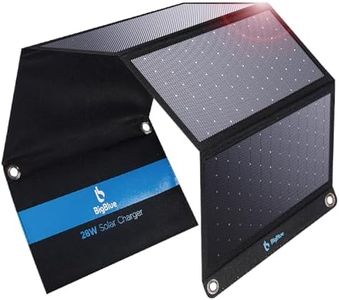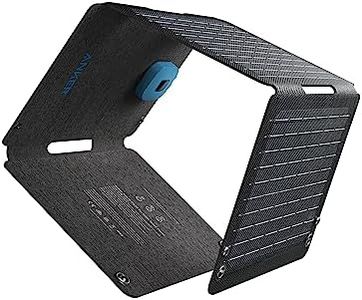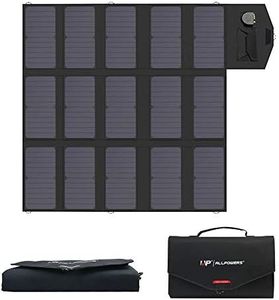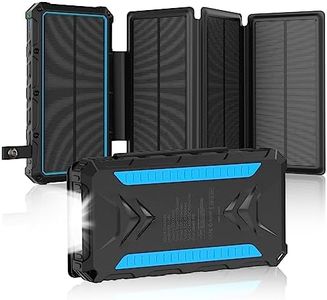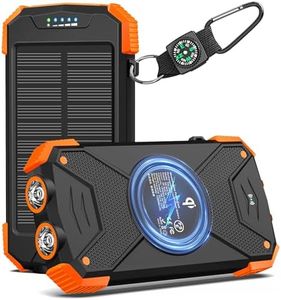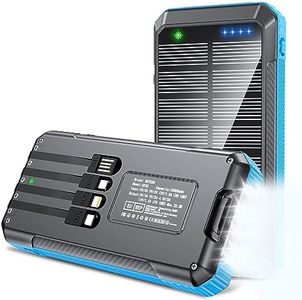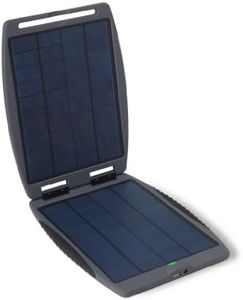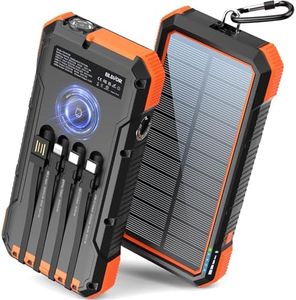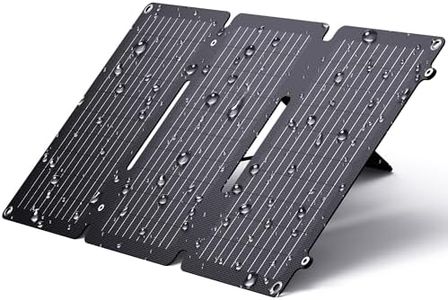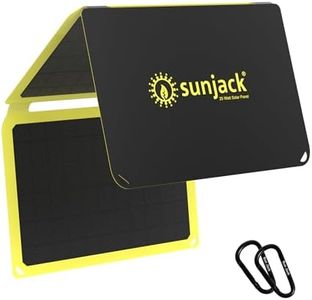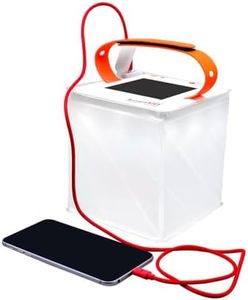We Use CookiesWe use cookies to enhance the security, performance,
functionality and for analytical and promotional activities. By continuing to browse this site you
are agreeing to our privacy policy
10 Best Solar Phone Chargers
From leading brands and best sellers available on the web.Buying Guide for the Best Solar Phone Chargers
Choosing a solar phone charger can feel overwhelming, but if you focus on a few key features and think about how and where you'll use it, you'll find a model that fits your needs perfectly. Start by considering how often you're away from regular power sources, how many devices you want to charge, and where you'll be using the charger—whether it's for short hikes, camping trips, travel, or emergencies at home. Think about portability, charging speed, and reliability, as solar phone chargers can vary widely in these areas. It's important to also understand the environmental conditions where you plan to use it, such as how much sunlight is available.Solar Panel Power Output (Wattage)The power output of a solar charger, measured in watts, tells you how much electricity the panel can generate from sunlight. Higher wattage panels can charge devices faster, which is important if you want to power larger devices or multiple phones at the same time. Solar chargers usually range from about 5 to 25 watts. Lower wattages (5–10W) are fine for emergency situations or just topping up your phone occasionally, while mid-range (10–15W) is suitable for regular use or charging more than one device moderately fast. Above 15 watts is recommended if you need to charge tablets or want the fastest performance for multiple phones. Your choice should depend on how quickly you want your devices charged and how many devices you plan to connect at once.
Battery Capacity (mAh)Some solar chargers are just panels, while others include a built-in battery, measured in milliampere hours (mAh). This shows how much charge the device can store and later provide to your phone, even when the sun isn’t shining. Smaller batteries around 5,000–10,000 mAh can fully recharge a typical phone once or twice, while 15,000 mAh and above are better if you’ll be off the grid for a while or want to recharge tablets too. If you plan to be somewhere without sunlight for long periods or want to charge multiple devices, prioritizing a larger built-in battery is a good idea.
Portability and WeightSolar chargers come in different sizes and weights, making portability important based on your activities. Ultra-light, compact chargers are excellent if you’ll be backpacking or hiking and want to save space and weight, but they often have lower power output and smaller batteries. Larger chargers may offer more charging power or bigger batteries but can be bulkier and heavier. Consider what kind of trips you’ll take and how much extra weight you’re willing to carry when picking the right size for your needs.
Charging Ports and TypesThe number and type of charging ports (such as USB-A, USB-C, or wireless charging pads) decide how many and what types of devices you can charge at the same time. More ports mean you can recharge several devices at once, which is useful if you’re traveling in a group. Make sure the ports match your devices’ charging cables and that the combined output is strong enough. If versatility is important, look for chargers with multiple port types.
Durability and Weather ResistanceSince you’ll often use your solar charger outdoors, durability and weather resistance matter. Look for features like water resistance, dustproofing, and sturdy materials that can handle drops or rough handling. Chargers are usually rated with IP (Ingress Protection) ratings: IPX4 means splash-resistant, while IPX7 or higher means it can withstand more water. If you plan to use it in unpredictable weather or rugged conditions, these features will make sure your charger lasts longer and works reliably.
Panel Type and EfficiencySolar chargers usually use monocrystalline, polycrystalline, or thin-film panels. Monocrystalline panels are the most efficient at converting sunlight into electricity and perform better in lower light, but they can be a bit more expensive. Polycrystalline panels are slightly less efficient but still effective, while thin-film panels are less common and typically more flexible but also less efficient. If you want faster charging and plan to use the panel where sunlight may not always be direct or strong, opt for higher-efficiency (usually monocrystalline) panels.
